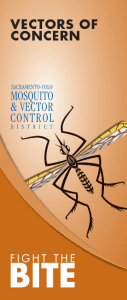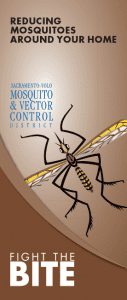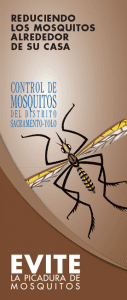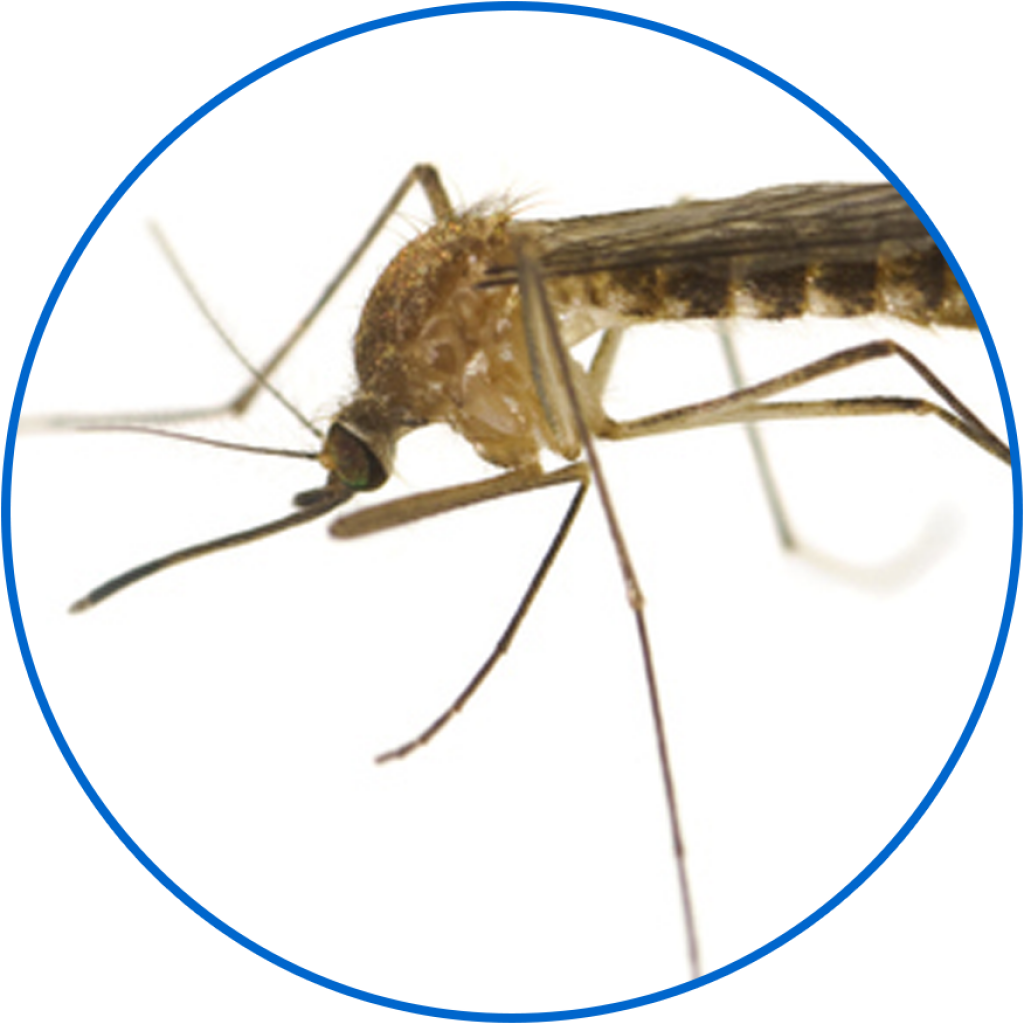MOSQUITOES IN OUR DISTRICT
Mosquitoes are effective vectors (agents that spread disease) of multiple pathogens in our area including West Nile, Saint Louis encephalitis, and western equine encephalitis viruses, malaria parasites, and canine heartworm. There are approximately 3,500 species of mosquitoes distributed worldwide, 53 different species occur in California and over 20 are found in Sacramento and Yolo counties.
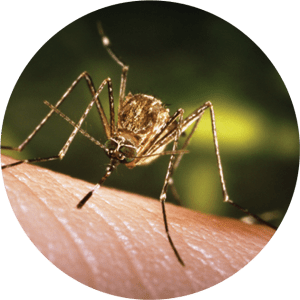
Culex tarsalis (WESTERN ENCEPHALITIS MOSQUITO)
This mosquito breeds in wetlands, duck clubs, rice fields and irrigated crops. It is abundant in the rural areas of Sacramento and Yolo Counties, but since it is a strong flier can also be found in cities and towns. In our area Culex tarsalis is an effective vector West Nile, western equine encephalitis and Saint Louis encephalitis viruses. This mosquito can be found all year, but it is most active during the summer and fall. Culex tarsalis preferentially feeds on birds, but will also feed on mammals and humans when available.
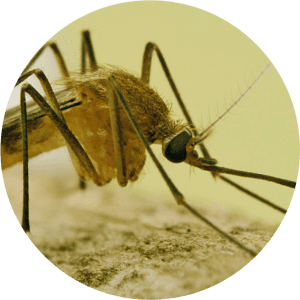
Culex pipiens (NORTHERN HOUSE MOSQUITO)
Backyard sources such as ponds, fountains, bird baths, buckets, neglected swimming pools, and foul water sources such as dairy lagoons and catch basins are the prefered breeding habitats for this mosquito. Thus they are commonplace in towns and cities, but can also be found in rural areas. Culex pipiens prefers to feed on birds, but will readily feed on humans. This mosquito is an important vector of West Nile and Saint Louis encephalitis viruses, and is mostly active during the summer and fall, but can be found year-round.
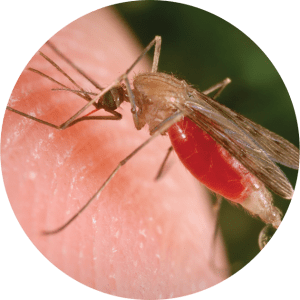
Anopheles freeborni (WESTERN MALARIA MOSQUITO)
A common and abundant mosquito of rice growing regions of California, Anopheles freeborni breeds in rice fields, wetlands, duck clubs, and rain pools. This mosquito is a long distance flier that will readily seek out populated areas in search of a blood meal. Females rest in protected areas over the winter and when the weather begins to warm in the spring this species becomes a marked nuisance when large numbers of hungry females emerge in search of a blood meal. This mosquito was an important vector of malaria in California during the 1800’s and early 1900’s. Although malaria has since been eradicated from the area Anopheles freeborni can still spread the parasite if they feed on people who were infected elsewhere. This mosquito is briefly active in the spring, and predominantly active in the summer and fall.
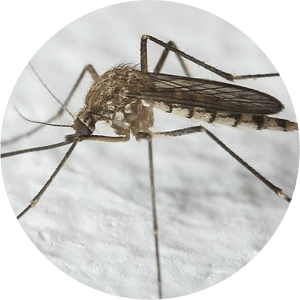
Aedes vexans (INLAND FLOODWATER MOSQUITO)
This mosquito can be a severe outdoor pest as females are vicious day and nighttime biters. Aedes vexans breeds in irrigated pastures and woodland water pools, but can travel up to 10 miles in search of a blood meal. This mosquito is active early spring through late fall and is not an important vector of human disease.
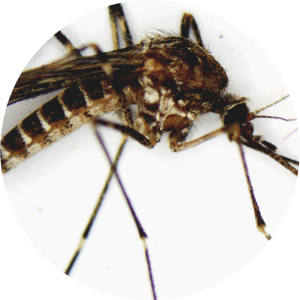
Aedes sierrensis (WESTERN TREEHOLE MOSQUITO)
This mosquito utilized water-filled rot holes in trees (treeholes) as a breeding source. Females lay their eggs on the side of the hole along the water line, when the eggs are covered with water the larvae emerge. Adult female mosquitoes generally feed on small mammals, but can become an annoying pest when breeding sources are in close proximity to human activity. Although this mosquito is not an important human disease vector, it is the primary vector of dog heartworm in our area.
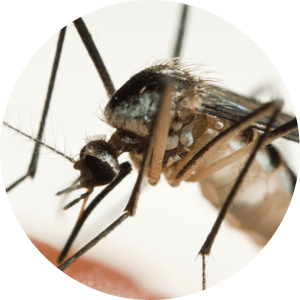
Aedes melanimon (NO COMMON NAME)
Aedes melanimon is a common mosquito found in most inland valleys of California, and is regularly detected in Sacramento and Yolo Counties. It breeds in wetlands, duck clubs and irrigated pastures and can be a major pest in localized areas surrounding breeding habitat. This mosquito is an important secondary vector of western equine encephalitis, perpetuating a transmission cycle among wild rabbits. Aedes melanimon prefers to feed on mammals and is most active during the spring and fall.
REDUCING MOSQUITOES AROUND YOUR HOME
Yards are the #1 source for mosquito production. Anything that can hold water for more than a few days has the ability to produce mosquitoes. Maintain, manage or eliminate all types of standing water on a regular basis. Keep in mind that mosquitoes need as little as a 1/2 inch of water to complete their life cycle, therefore some areas may not be as obvious as others.
Check out these areas around your home where mosquitoes can breed.
MOSQUITO LIFE CYCLE
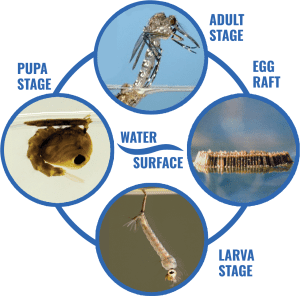
Mosquitoes need water to exist! This illustration shows the mosquito life cycle from egg to larva to pupa to adult. You can prevent mosquitoes from developing by removing or draining any stagnant water around your home. During peak summer temperatures some mosquitoes can complete their life cycle in as little as 4 to 7 days, however the average length is about 14 days.


